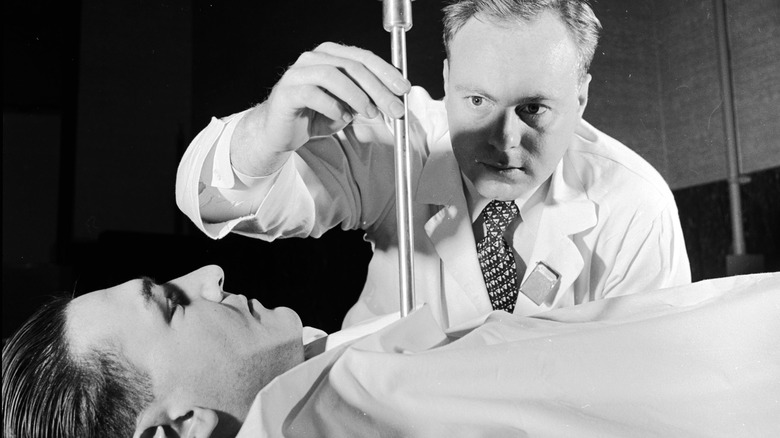The US Government's Secret Plan To Experiment On American Citizens Explained
They did the experiments under the guise of looking for a treatment for terminal cancers, but critics say when Dr. Eugene L. Saenger and his team at the University of Cincinnati exposed at least 88 patients to whole body radiation, they were really doing it to help the Pentagon.
According to a 1994 article in The New York Times, Saenger proposed to study the way the high doses of radiation would affect stage four cancer patients, which would translate into information useful to understanding how the human body would react if exposed to nuclear warfare in a battlefield situation. The Pentagon, who wanted to know how much radiation a soldier could be exposed to before becoming sick or disoriented, sponsored the experiment, which was done from 1960 to 1971 on mostly poor patients, 60% of whom were Black.
"The study was designed to test the effect of radiation on soldiers," said Dr. David Egilman, a clinical associate professor of community health at Brown University and a critic of the study, reported The New York Times. "It was known when the study began that whole body radiation wouldn't treat the types of cancer these patients had. What happened here is one of the worst things this government has ever done to its citizens in secret."
Dr. Saenger may not have thought the experiment was unethical
Dr. Saenger, described as "a pioneer in nuclear medicine and radiology," didn't feel he was doing anything unethical, according to what UC medical physicist Stephen Thomas told The Columbus Dispatch.
"I know personally that he was affected deeply by that public reaction," Thomas said. "I also know that he felt he had acted entirely within the realm of medicinal science as it was known at that time. He definitely felt that he had not overstepped any bounds, any ethics in the research."
Regardless of his feelings about his work, the families of those who were experimented on did not agree. In 1999, he lost $3.6 million in a lawsuit initiated by multiple relatives of the cancer patients exposed to the potentially deadly amounts of radiation. Their argument was that the radiation exposure likely shortened their lives. The families also claimed their relatives were not informed that the treatments could kill them. What's more, they were not told they were being used as part of military research, per The Columbus Dispatch.
According to a 1972 paper on the study called "Radiation Effects in Man: Manifestations and Therapeutic Efforts," Saenger and his colleagues reported that they thought only eight deaths were "possibly attributable to radiation." However, a later report found that it was more like one-fourth of the patients involved died from radiation exposure, The New York Times reported.

